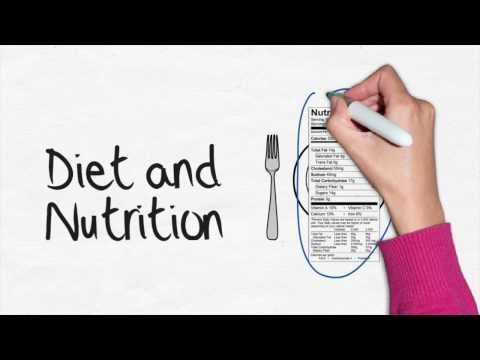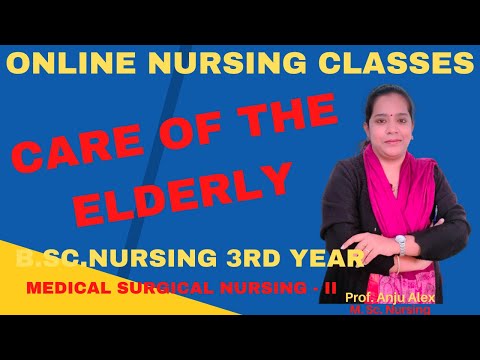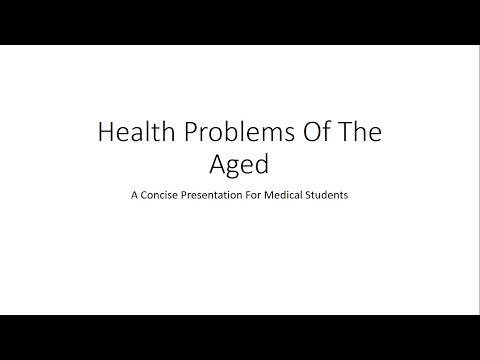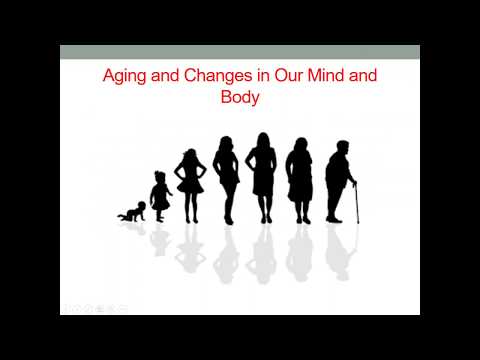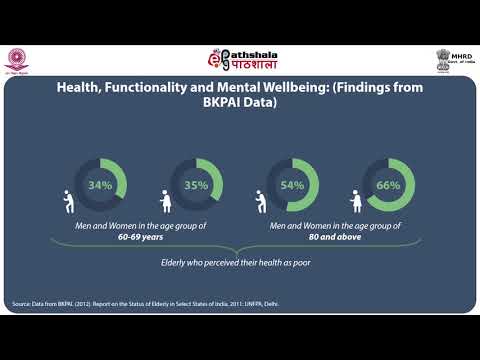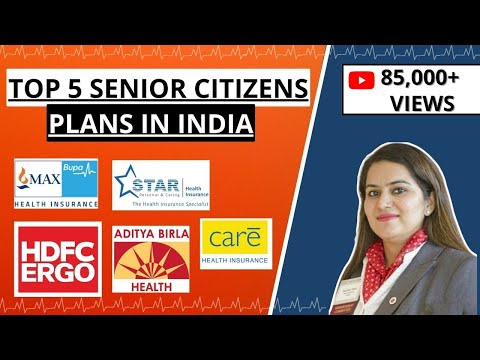Health Promotion Strategies for the Elderly
Contents
- Introduction
- The Importance of Health Promotion for the Elderly
- Common Health Issues in the Elderly
- Effective Health Promotion Strategies for the Elderly
- Promoting Healthy Lifestyles in the Elderly
- Preventing Falls in the Elderly
- Improving Nutrition in the Elderly
- Managing Chronic Conditions in the Elderly
- Enhancing Cognitive Function in the Elderly
- Conclusion
As we age, our health needs change. To stay healthy and independent, it’s important to know how to promote our health as we age. Check out these health promotion strategies specifically for the elderly!
Checkout this video:
Introduction
As people age, they are more susceptible to chronic diseases and health problems To promote the health of the elderly, various health promotion strategies have been developed. These strategies are designed to encourage older adults to adopt healthy lifestyles and make positive changes in their lives.
Health promotion strategies for the elderly typically focus on four key areas: physical activity, nutrition, mental health and social engagement. By promoting healthy behaviors in these areas, seniors can improve their overall health and well-being.
Physical activity is important for seniors for several reasons. It can help reduce the risk of chronic diseases such as heart disease and diabetes, it can improve mental health and cognitive function, and it can help reduce the risk of falls and injuries. To promote physical activity among seniors, health promotion strategies may include educational programs on the benefits of physical activity, community events and activities that encourage seniors to be active, and policies that make it easier for seniors to be active (such as building sidewalks or creating bike lanes).
Nutrition is another key area of focus for senior health promotion. A healthy diet can help seniors maintain their weight, reduce their risk of chronic diseases, and improve their overall energy levels and well-being. To promote healthy eating among seniors, health promotion strategies may include educational programs on nutrition, community gardens or farmers markets that sell fresh fruits and vegetables, and policies that make it easier for seniors to access healthy food (such as zoning laws that allow grocery stores in senior communities).
Mental health is also an important aspect of senior health. Depression is common among older adults, and it can lead to social isolation, poor sleep quality, decreased appetite, and other negative health outcomes. To promote mental health among seniors,health promotion strategies may include educational programs on depression and its symptoms, support groups for seniors with depression, and policies that make it easier for seniors to access mental healthcare (such as insurance coverage for therapy).
Finally, social engagement is another key area of focus for senior health promotion. Social isolation is a major problem among older adults, and it can lead to poor mental health decreased physical activity levels, and other negative outcomes. To promote social engagement among seniors,health promotion strategies may include community events specifically for seniors
The Importance of Health Promotion for the Elderly
As people age, they become more susceptible to health problems such as heart disease, stroke, cancer, and memory decline. Many of these health problems can be prevented or minimized by adopting a healthy lifestyle and maintaining an active lifestyle. Unfortunately, many seniors do not believe that they need to take care of their health because they feel that they are already old and there is nothing that they can do to improve their health. This is a mistaken belief because there are actually many things that seniors can do to improve their health and prolong their life.
One of the most important things that seniors can do for their health is to participate in health promotion activities. Health promotion includes any activity that helps people to maintain or improve their health. It can include things like eating a healthy diet, exercising regularly, getting enough sleep, and avoiding risky behaviors like smoking and drinking too much alcohol. Health promotion activities are important for everyone, but they are especially important for seniors because they can help to prevent or delay the onset of many chronic diseases.
There are many different ways to promote health among seniors. One way is to offer educational programs on healthy living. These programs can cover topics like healthy eating, exercise, and disease prevention. Many community organizations offer these types of programs specifically for seniors. Another way to promote health among seniors is to provide them with opportunities to be physically active. This could include things like starting an exercise program at a senior center or creating walking paths in senior housing complexes. Finally, it is also important to create social support networks for seniors so that they feel connected to others and have people to rely on for help and advice when needed.
Common Health Issues in the Elderly
The elderly are a growing population and with age comes an increased risk of developing chronic health problems. The most common health issues faced by the elderly are:
-Heart disease
-Cancer
-Stroke
– Lung disease
– Diabetes
These chronic health conditions can lead to other problems, such as:
-Decreased mobility
-Decreased independence
-falls
-frailty
-(Chronic) pain
Effective Health Promotion Strategies for the Elderly
There are many factors that contribute to the declining health of the elderly population. As people age, they are more likely to experience chronic diseases such as heart disease, stroke, cancer, and diabetes. In addition, the elderly are more likely to have cognitive impairments and functional limitations. These factors can make it difficult for the elderly to maintain their health and prevent further decline.
Health promotion is an important part of maintaining the health of the elderly population. Health promotion activities help to promote healthy behaviors and prevent health problems before they start. There are many different types of health promotion activities that can be effective for the elderly population.
One type of activity that can be effective is educational programming. Educational programming can provide information about how to maintain good health and prevent chronic diseases. It can also provide information about how to cope with the changes that come with aging. Educational programming can be delivered in a variety of ways, including in-person classes, printed materials, and online presentations.
Another type of activity that can be effective is exercise programs. Exercise programs can help to improve physical fitness and reduce the risk of chronic diseases. Exercise programs can be delivered in a variety of ways, including in-person classes, at-home workouts, and online videos or applications.
Health promotion activities can also include support groups. Support groups can provide social support and allow people to share information about how to maintain good health as they age. Support groups can be delivered in a variety of ways, including in-person meetings, online forums, and telephone hotlines.
Promoting Healthy Lifestyles in the Elderly
There are many health promotion strategies that can be used to promote healthy lifestyles in the elderly. One such strategy is to encourage physical activity. Regular physical activity has been shown to improve overall health and wellbeing, and can help to reduce the risk of developing chronic diseases such as heart disease, stroke, and diabetes.
Another strategy that can be used to promote healthy lifestyles in the elderly is to encourage healthy eating habits. A healthy diet is important for maintaining a healthy weight, reducing the risk of developing chronic diseases, and providing the nutrients needed for good health.
Another health promotion strategy that can be used to promote healthy lifestyles in the elderly is to encourage social and emotional wellbeing. Social and emotional wellbeing are important for overall health and wellbeing, and can help to reduce the risk of developing chronic diseases.
These are just some of the many health promotion strategies that can be used to promote healthy lifestyles in the elderly. For more information on health promotion strategies for the elderly, please contact your local health department or primary care provider
Preventing Falls in the Elderly
One of the most effective ways to prevent falls in the elderly is to promote physical activity and muscle strength. This can be done through a variety of methods, such as:
-Encouraging walking, Tai chi, or other forms of exercise that improve balance and leg strength
-Exercising with weights to build muscle mass and reduce the risk of fractures
-Making the home safe by removing hazards such as loose carpets and electrical cords, and installing handrails on stairways
Other strategies for preventing falls in the elderly include:
-Educating patients and their families about fall risks and how to reduce them
-Improving vision through regular eye exams and corrective lenses, if needed
-Reviewing medications with a doctor or pharmacist to identify any that may cause dizziness or drowsiness
Improving Nutrition in the Elderly
Improving nutrition in the elderly is a key health promotion strategy. The elderly are at increased risk for malnutrition due to factors such as chronic illness, decreased appetite, and medications that can interfere with nutrient absorption. Malnutrition can lead to a host of problems such as weakness, impaired immunity, and decreased wound healing.
There are several ways to improve nutrition in the elderly. One is to encourage them to eat a healthy diet that includes plenty of fruits, vegetables, and whole grains. Another is to make sure they are getting enough protein by including lean meats, eggs, and dairy in their diet. It is also important to make sure they are getting enough essential vitamins and minerals by taking a daily multivitamin supplement. Finally, it is important to stay hydrated by drinking plenty of fluids throughout the day.
Managing Chronic Conditions in the Elderly
Chronic conditions are a leading cause of death and disability worldwide, especially in low- and middle-income countries. The elderly are particularly vulnerable to chronic conditions due to the aging process itself as well as the higher prevalence of chronic diseases in this population group. However, chronic conditions are not an inevitable part of aging – there are many things that can be done to prevent or manage them.
Health promotion is an important part of preventing and managing chronic conditions in the elderly. It involves all measures that aim to promote health, prevent disease, and prolong life. Common health promotion activities for the elderly include health education, screening and immunization programs, and physical activity programs.
Education is a key component of health promotion for the elderly. Health education programs provide information on how to prevent or manage chronic conditions. These programs can be delivered through different channels such as community-based organizations, healthcare facilities, or mass media campaigns.
Screening and immunization programs are another important part of health promotion for the elderly. Screening programs help to identify individuals at high risk for developing certain chronic conditions so that they can receive early treatment. Immunization programs protect individuals from diseases that can lead to chronic conditions, such as influenza and pneumonia.
Physical activity programs are also an important part of health promotion for the elderly. Regular physical activity has been shown to reduce the risk of developing many chronic conditions, such as heart disease, stroke, diabetes, and some forms of cancer. Physical activity programs for the elderly can include walking groups, exercise classes, or individualized physical activity plans.
Enhancing Cognitive Function in the Elderly
Cognitive decline is a major public health concern among the elderly. There are many interventions and therapies that can help to prevent or delay cognitive decline, but effective strategies must be tailored to the needs of the individual. Some general tips for enhancing cognitive function in the elderly include:
-Encouraging social and recreational activities: Social interactions and opportunities for mental stimulation can help to keep the mind active and promote cognitive health.
-Engaging in physical activity: Exercise has numerous benefits for cognitive health, including reducing the risk of developing dementia.
-Eating a healthy diet: A healthy diet is important for overall health and can help to reduce the risk of developing dementia.
-uesing mental stimulation games: Brain games or other mentally stimulating activities can help to keep the mind active and delay cognitive decline.
Conclusion
In conclusion, there are a number of health promotion strategies that can be effective for the elderly population. These include education on chronic disease prevention, promoting healthy lifestyle choices, and providing support for older adults in maintaining their independence. While all of these strategies are important, it is critical that they be tailored to the unique needs and abilities of this population. With an aging population, it is more important than ever to focus on health promotion efforts that can help improve the quality of life for older adults.

